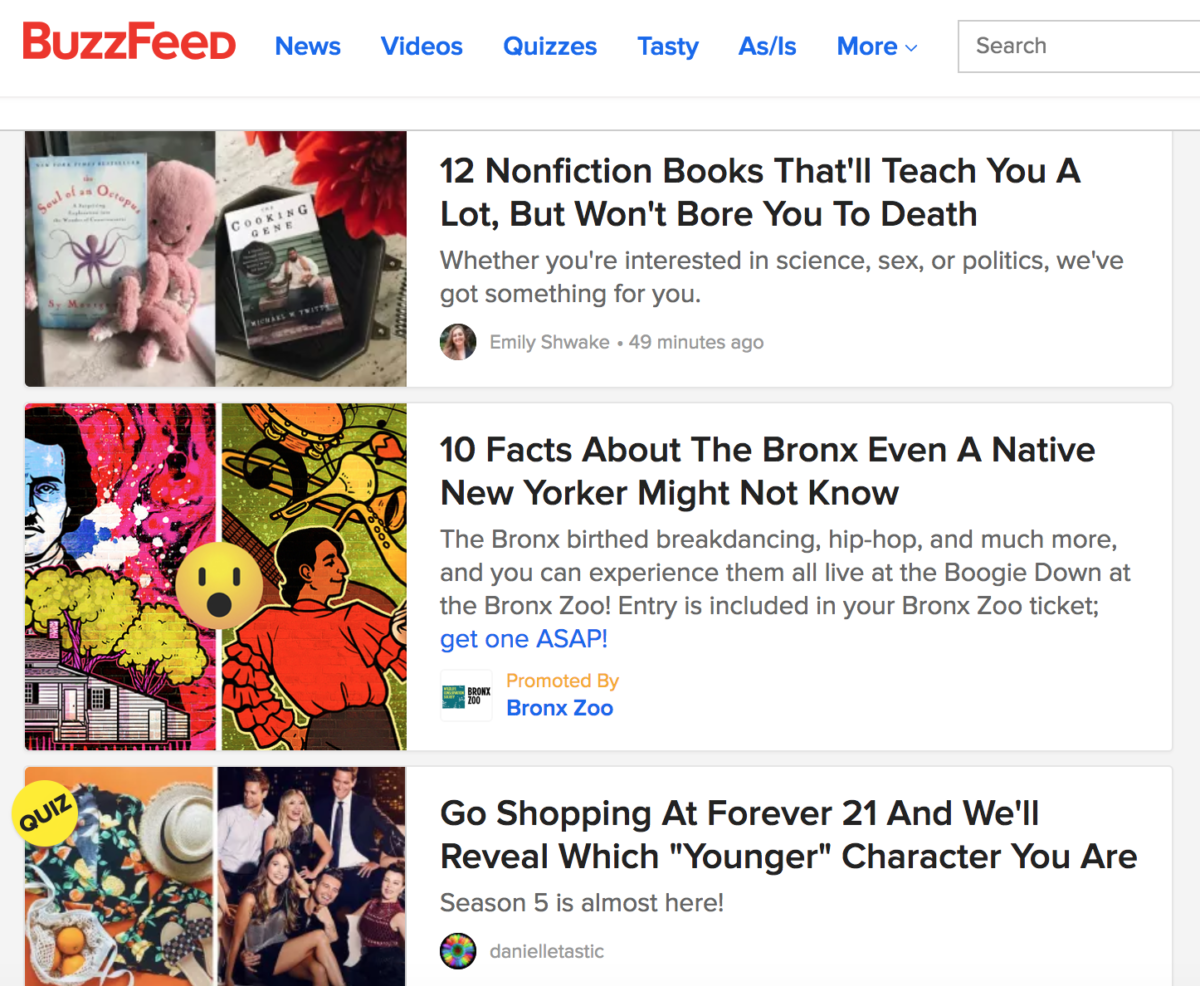
You can find a blog on just about everything these days. (Seriously, there are even ones about hungover owls and awkward stock photos.)
Thinking about starting a blog on your site? That’s a great idea — and here’s why and how to do it.
Why blogs matter
Writing a blog might seem like just another task on your ever-growing to-do list, and we get it. You want to make sure you’re spending time on the things that really matter to your organization, and on the surface, it may be difficult to see the value in adding a blog to your site. And let’s be honest, posting (relevant, engaging) content on a daily or weekly basis can be challenging.
However, blogging can affect everything from web traffic to purchasing activity, according to inbound marketing company IMPACT:
- 60 percent of marketers say creating blog content is their top inbound marketing priority
- 61 percent of U.S. online consumers have made a purchase based on a recommendation from a blog
- 77 percent of web users read blogs
- Blog generation increases up to 30 percent after you’ve written 21 to 54 blog posts — and it goes up to 77 percent after 52 blogs
But maybe one of the best statistics is that small businesses with a blog earn 126 percent more lead growth than small businesses that don’t. So, can you really afford not to blog?
Blogs can be a great selling tool for your business or nonprofit, but you shouldn’t approach them with that type of mindset. Your subscribers don’t want to read another advertisement: They want something that actually benefits them.
1 Create valuable content
You can have the perfect page layout, photos, posting schedule, and subscriber list. But if you’re not cranking out amazing, useful content, you’re wasting everyone’s time. Blogs must contain content that brings value to your subscribers. And to do that, you need to understand what problems, concerns, and needs they have and then write posts that address those things.
Writing those first few blogs can seem a bit overwhelming, especially when it comes to what topics will work best. To get started, create content that fits into these three stages of the buyer’s journey:
- Awareness: This is where you’ll want to spend most of your time when launching your new blog. The content should educate your readers about problems and options they have to fix them. Look at your site’s search information or other customer data to see what potential problems you can address. Use your site analytics to figure out where people get hung up or spend the most time. This type of blog will help you build a relationship with your readers and show you know their concerns.
- Consideration: This is when your reader knows what issues they have and want to find a fix. “How To” blogs are a perfect fit for this stage. Just remember to keep your company mentions to a minimum. You want to earn their trust, not create a sales pitch.
- Decision: Blogs written for this stage are meant for readers who are ready to make a purchasing decision, hence the name. You can include more information about how your company can provide a solution to their problem and stands out from the competition.
Here are three blog topic examples for each stage to show you how they progress:
- Awareness: 5 Reasons Your Grass is Brown
- Consideration: How to Treat Dead Spots on Your Lawn
- Decision: Best Lawn Care Companies in San Francisco
Once you have at least one blog from each stage, start taking your email subscribers through the buyer’s journey with your newsletters. After you send an engaging welcome email, follow up with a piece from the awareness stage to get them started. From there, take them to a consideration and eventually decision blog posts with your automated emails.
As you build up your blog content, you can also send them emails with links to topics you know they’ll like based off of their past history and customer data. You can’t go wrong with a targeted, personalized approach.
2 Hold their attention captive
We’re all guilty of it — skimming through a post, only reading the headers, pull quotes, sections that interest us, or looking at the pretty pictures. In fact, 43 percent of people say they skim articles. Face it: We all have a short attention span.
To combat goldfish syndrome and keep people on your blog longer, use these best practices throughout your content and layout:
- Break up text: Beyond having short paragraphs (two to three sentences), you can also use visual elements to add some interest. Eye-catching photos, infographics, GIFs, and videos will help keep readers’ eyes from glazing over and moving on to something else.
- Bullet points: When you opened this blog, did this bulleted list catch your eye? Using bullets or indented numbers helps break up the overall text and also give your readers a smaller chunk of content that’s easier for them to digest.
- Listicles: You can take that technique a step further and make the entire blog a list. For example, an article titled “7 Ways to Tell Your Dog Loves You” could feature seven points, along with a short paragraph or two under each one. Buzzfeed is great at this approach, if you need inspiration.

3 Stick to a schedule
It’s easy to lose steam a few weeks after committing to write a blog. But, as the saying goes, “Anything worth doing is worth doing right.” If you’ve decided to add blogs to your content marketing strategy, make them a priority.
Posting blogs on a regular schedule — whether that’s daily, weekly, or bi-weekly — will give your site a steady stream of traffic and make your followers anticipate the next blog. They’ll know what day to check your site for a new blog or to watch their inbox for your newsletter.
One of the best ways to stay on schedule with posting (and take some of the pressure off of you) is to plan out a blog topic schedule ahead of time. For example, if you’re going to post a blog each week, set aside an hour at the beginning of the month to come up with four or five topics you or your team can write about each week.
You can even assign them to yourself or another team member using project management programs like Basecamp or Trello. That adds a sense of accountability and keeps things from slipping through the cracks or falling behind schedule.
No matter how often you post, share your blog through your email newsletter and social media pages. You can have the best content in the world, but if no one reads your blog, it’s not worth anything.
4 Remember best practices
Writing blogs requires a certain level of experience and expertise, so make sure whoever is handling yours is up for the task. We aren’t going to give you a “Blog Writing 101” class here, but there are a few techniques that will improve your skills right away:
- Write like you talk. Read your blog out loud and see if sounds conversational. You don’t want it to come across as too formal or full of industry jargon.
- Edit and then edit again. Reread your blog at least once, and have someone else read through it, as well. Nothing loses credibility like misspellings, poor grammar, and typos.
- Follow an outline. This can be in print or simply in your head, but you want there to be a purpose to every blog. So, don’t simply start writing and hope it turns out well. Start with something attention-grabbing, and be clear about the subject matter. Then, get to the meat of the topic, and close out with what they should do next.
- Use your knowledge and data. Showcase your insights to prove you know your stuff, but back it up with data, statistics, case studies, and other third-party information. Don’t be afraid to link to other sites because that will build your credibility and Google ranking.
5 Don’t forget your CTA
Having people read one of your blog posts is great, but who said the fun has to end there? A truly engaging post will have them wanting more.
Encourage them to keep interacting with you by adding a CTA at the end of every post. That could be a button to download a whitepaper, text telling them to contact you, or a link to related content. That will also help improve your bounce rate and time on site.
And to practice what we preach…
Share your blog tips below in the comments!
Lauren Dowdle is an award-winning writer based in Nashville, Tenn. Her decade-long writing career has covered everything from landscaping to marketing.

